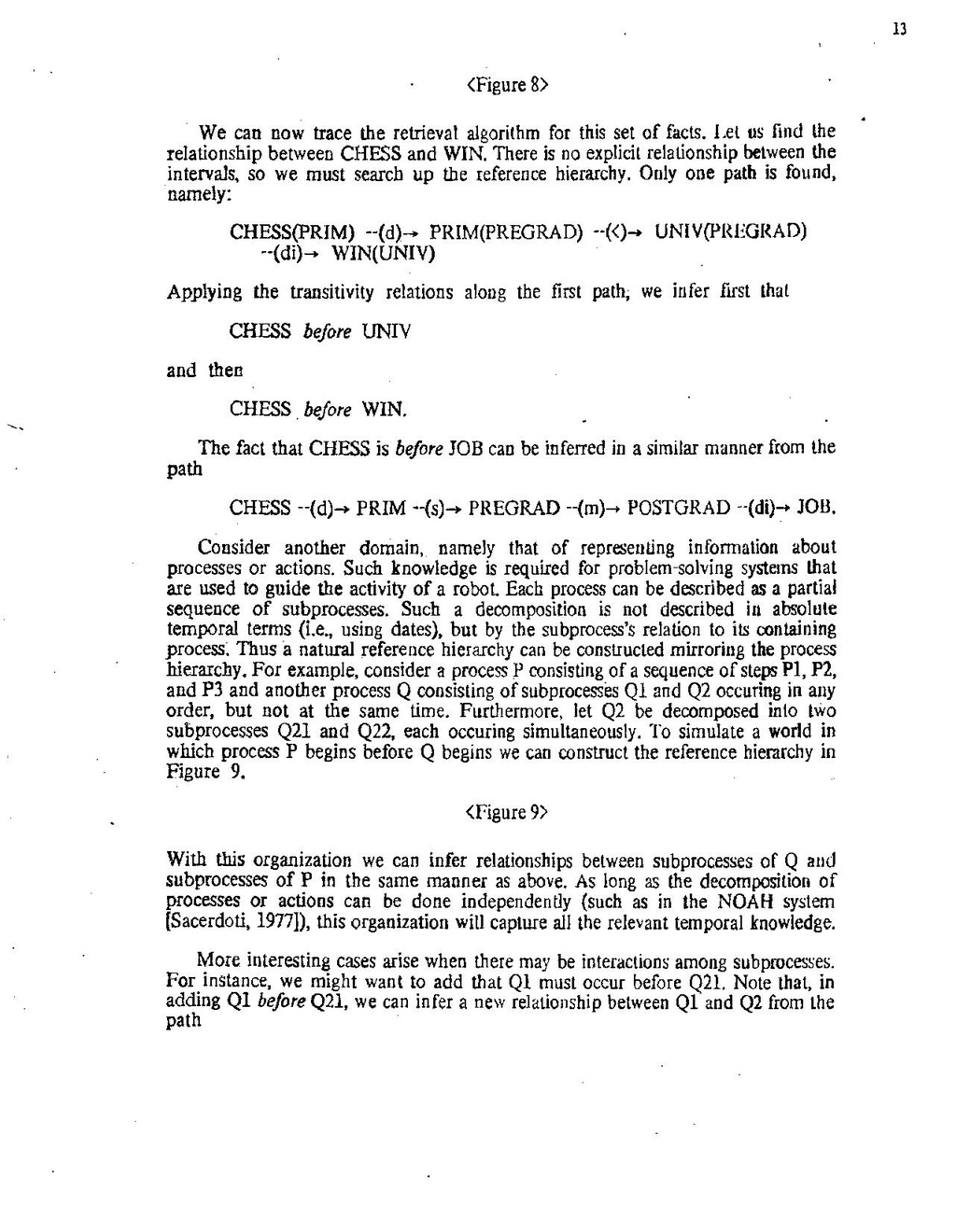Figure 8)
We can now trace the retrieval algorithm for this set of facts. Let us find the relationship between CHESS and WIN. There is no explicit relationship between the intervals, so we must search up the reference hierarchy. Only one path is found, namely:
CHESS(PRIM) --(d)→ PRIM(PREGRAD) --()UNIV(PREGRAD)
--(di) - WIN(UNIV) Applying the transitivity relations along the first path; we in fer first that
CHESS before UNIV
and then
CHESS before WIN.
The fact that CHESS is before JOB can be inferred in a similar manner from the path
CHESS --(d) → PRIM --(s)→ PREGRAD --(m)→ POSTGRAD --(di) → JOB. Consider another domain, namely that of representing information about processes or actions. Such knowledge is required for problem-solving systems that are used to guide the activity of a robot. Each process can be described as a partial sequence of subprocesses. Such a decomposition is not described in absolute temporal terms (i.e., using dates), but by the subprocess's relation to its containing process. Thus a natural reference hierarchy can be constructed mirroring the process hierarchy. For example, consider a process P consisting of a sequence of steps P1, P2, and P3 and another process Q consisting of subprocesses Ql and Q2 occuring in any order, but not at the same time. Furthermore, let Q2 be decomposed into two subprocesses Q21 and Q22, each occuring simultaneously. To simulate a world in which process P begins before Q begins we can construct the reference hierarchy in Figure 9.
<Figure 9)
With this organization we can infer relationships between subprocesses of Q and subprocesses of P in the same manner as above. As long as the decomposition of processes or actions can be done independently (such as in the NOAH system (Sacerdoti, 1977]), this organization will capture all the relevant temporal knowledge.
More interesting cases arise when there may be interactions among subprocesses. For instance, we might want to add that Ql must occur before Q21. Note that, in adding Q1 before Q21, we can infer a new relationship between Ql and Q2 from the path
